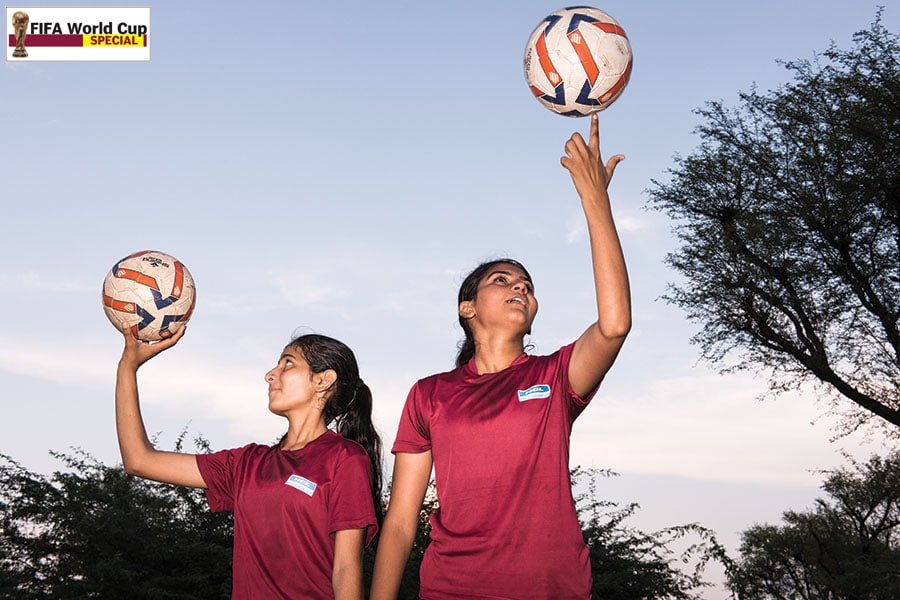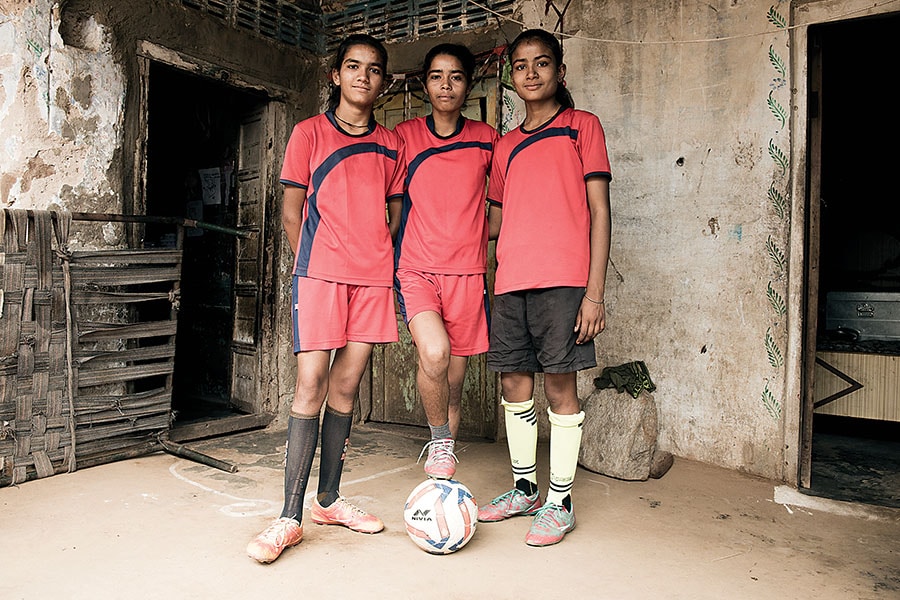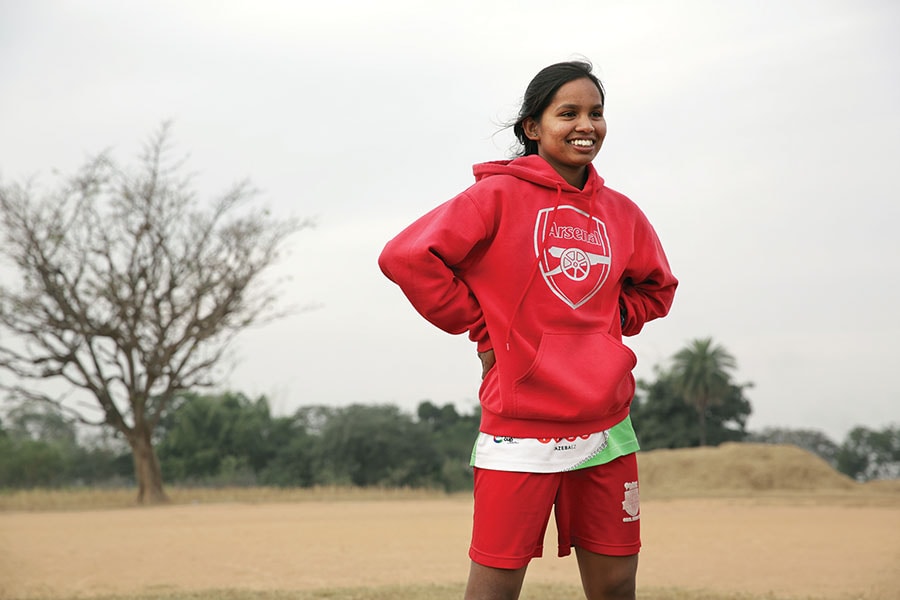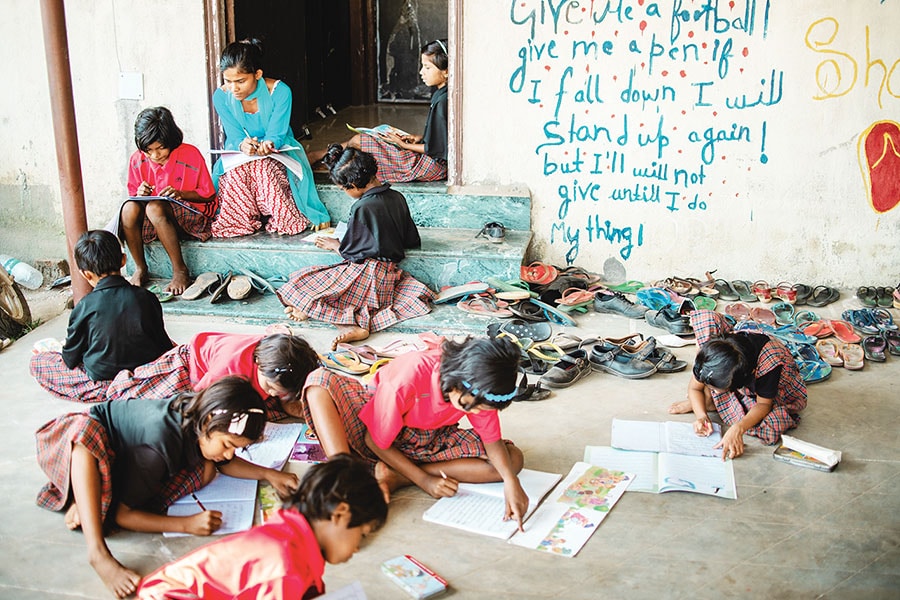
Football: A social and gender tool empowering girls in rural India
Girls from under-resourced communities in rural India are using the sport to navigate everyday freedoms, access education and assert personal agency. How far can the game take them in the fight against patriarchy, poverty and social ills?
 Mamta Gujjar (left) and Sapna Gujjar from Hansiyavas village in Rajasthan
Image: Amit Verma
Mamta Gujjar (left) and Sapna Gujjar from Hansiyavas village in Rajasthan
Image: Amit Verma
Their seven-month-old sister is named Nirasha (disappointment). Disappointment, because she was born a girl when there were already six in the family. “Our grandmother named her that because she was supposed to be a boy, and not a girl,” says Gayatri Panwar, 18, the eldest daughter of the family. She is standing outside her brick-walled house in the village of Chachiyawas in Rajasthan’s Ajmer district. There is no electricity; there hasn’t been any in the house for six months. “We’ve spent the entire summer without electricity. Now we’ve forgotten what it feels like,” says Gayatri’s 15-year-old sister Savitri.
Their father is an out-of-job alcoholic and mother a daily wage labourer, who earns around ₹250-300 per day. Gayatri and Savitri are both resisting attempts by their family to get them married. They want to study, get a job, and “stand on their own feet”, says Gayatri, who is in class 10. They draw inspiration from their friend and neighbour Payal Prajapati, 18, whose parents got her married when she was in Class 5, but who is now is putting up a fight against her ‘gauna’ (ritual where a child bride is sent to her marital home) and staying put with her family.
Her parents are fine with the arrangement for now, and one of the main reasons is that Payal happens to be among the handful of girls from Chachiyawas to travel outside Rajasthan. She is a football player who has participated in tournaments across states, sometimes bringing home prize money up to ₹10,000 or more. This has earned social pride for her family.
Gayatri, who wants to travel to different places like Payal does, looks at football as the only way out of the clutches of her social circumstances. Playing the game, she says, gives her a sense of confidence, and helps her believe that her aspirations are within reach. “I tell my mother, ‘I’ll do all the housework, take care of my sisters, and even look after everyone else at home. Just let me study and play football’,” she says, unblinking. “Just let me play.”













